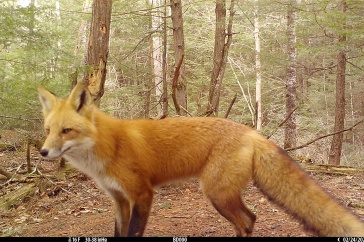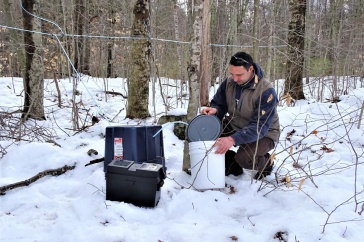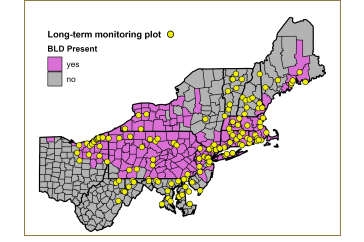
A New England cottontail (Sylvilagus transitionalis) hiding in its natural shrubland habitat. Image courtesy of U.S. Department of the Interior.
Cohabitating Environments
![]() Habitat specialist species are animals that require specific habitats and resources to survive and thrive. They differ from generalists that can live in multiple types of environments.
Habitat specialist species are animals that require specific habitats and resources to survive and thrive. They differ from generalists that can live in multiple types of environments.
![]() At-risk specialist species can benefit from surrogate species management. Surrogate species management refers to a conservation approach aimed at benefiting a broad suite of species that occupy similar habitat, with the surrogate species referring to the individual plant, animal or insect that is the focus of conservation and represents a broader set of species. Surrogate species conservation therefore typically has more broad-reaching ecosystem effects, especially on a regional scale, than at-risk species management, which focuses on a single species.
At-risk specialist species can benefit from surrogate species management. Surrogate species management refers to a conservation approach aimed at benefiting a broad suite of species that occupy similar habitat, with the surrogate species referring to the individual plant, animal or insect that is the focus of conservation and represents a broader set of species. Surrogate species conservation therefore typically has more broad-reaching ecosystem effects, especially on a regional scale, than at-risk species management, which focuses on a single species.
In New England, land use has changed dramatically over the past century, due largely to residential development and the breaking up and abandonment of farmlands. An unintended impact has been a more than 86 percent decrease in the range of the New England cottontail (Sylvilagus transitionalis). The New England cottontail requires habitats of shrublands and young forests with dense understories and thick brush, where it can easily escape from predators, build nests and find its preferred diet of grasses and flowering plants and shrubs. Ongoing habitat restoration efforts will help the survival of the New England cottontail, and new research by the New Hampshire Agricultural Experiment Station (NHAES) researchers published in Ecosphere finds that these efforts will have far-reaching benefits to shrubland-obligate birds with which the cottontail shares its habitat.
“The at-risk New England cottontail can serve as a surrogate species because under the umbrella of its conservation, a suite of additional species with similar habitat requirements benefit,” explained Melissa Bauer '18G, a Ph.D. candidate in Natural Resources and Environmental Studies at the College of Life Sciences and Agriculture and a co-author on the paper. “We found that 12 bird species showed associations with patches occupied by New England cottontails or microhabitat conditions suitable for New England cottontails. What this ultimately means is that restoring habitat for the New England cottontail has broad-reaching effects.”
The bird species include the Yellow Warbler, Prairie Warbler, Eastern Towhee, Black-and-White Warbler, Brown Thrasher, Field Sparrow, Blue-winged Warbler, Alder Flycatcher, Gray Catbird, Song Sparrow, Indigo Bunting and American Goldfinch. From 2015 to 2016, Bauer and her co-researchers—NHAES scientist Adrienne Kovach, an associate professor in the department of natural resources and the environment, and Kathleen O’Brien, a wildlife biologist with the U.S. Fish & Wildlife Service—surveyed 28 patches (in Maine, New Hampshire and Massachusetts) that were occupied by or managed for the New England cottontail and inventoried the number and species of birds present and the specific microhabitat characteristics of each site. In their research, they found that diverse modes of habitat management for New England cottontails takes place on a variety of site types and successional stages, thereby benefiting specialist birds with a range of habitat affinities across multiple stages of shrubland growth.
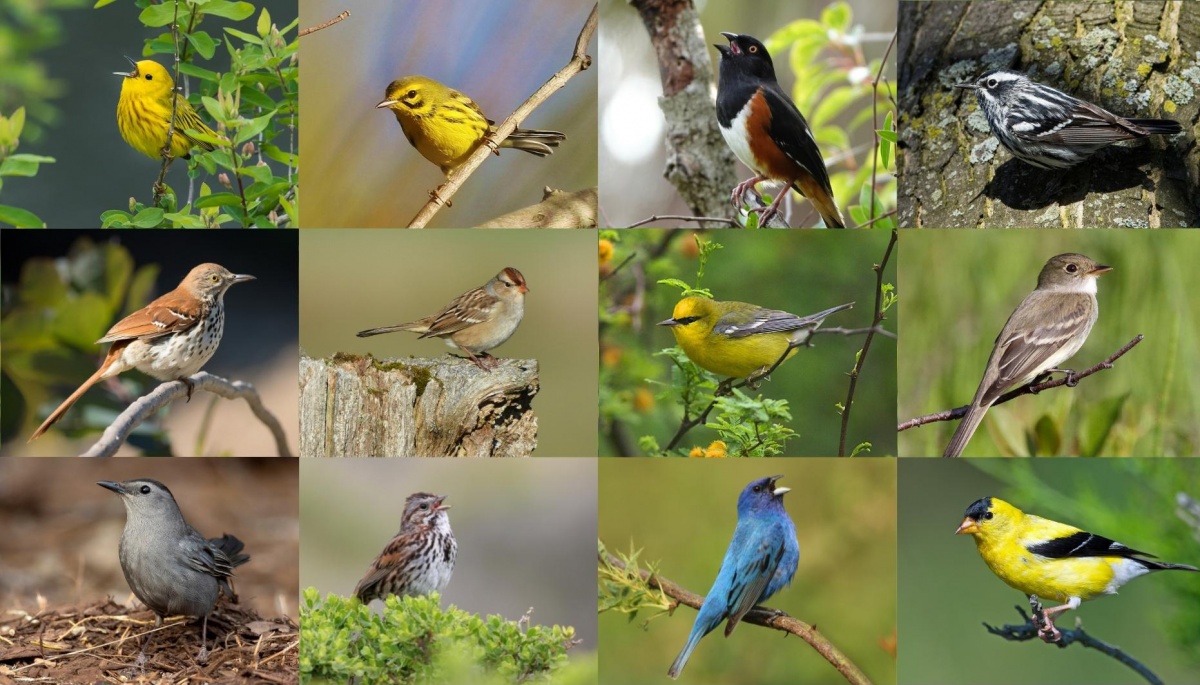
“This finding shows the importance of managing for a mosaic of habitat types, including dense, tall shrublands and open, grassy patches, to support a variety of shrubland bird species,” added Bauer.
The New England cottontail’s range extends from Southern Maine to Southeastern New York, with remnant occupied habitat patches in New Hampshire, Massachusetts, Rhode Island and Connecticut. Its historical range also included southern Vermont. Since the 1960s, the population of the New England cottontail has declined due largely to habitat loss and fragmentation, as well as competition with the introduced Eastern cottontail. Today, it’s believed there are less than 100 New England cottontail living in New Hampshire and less than 10,000 alive in the wild altogether.
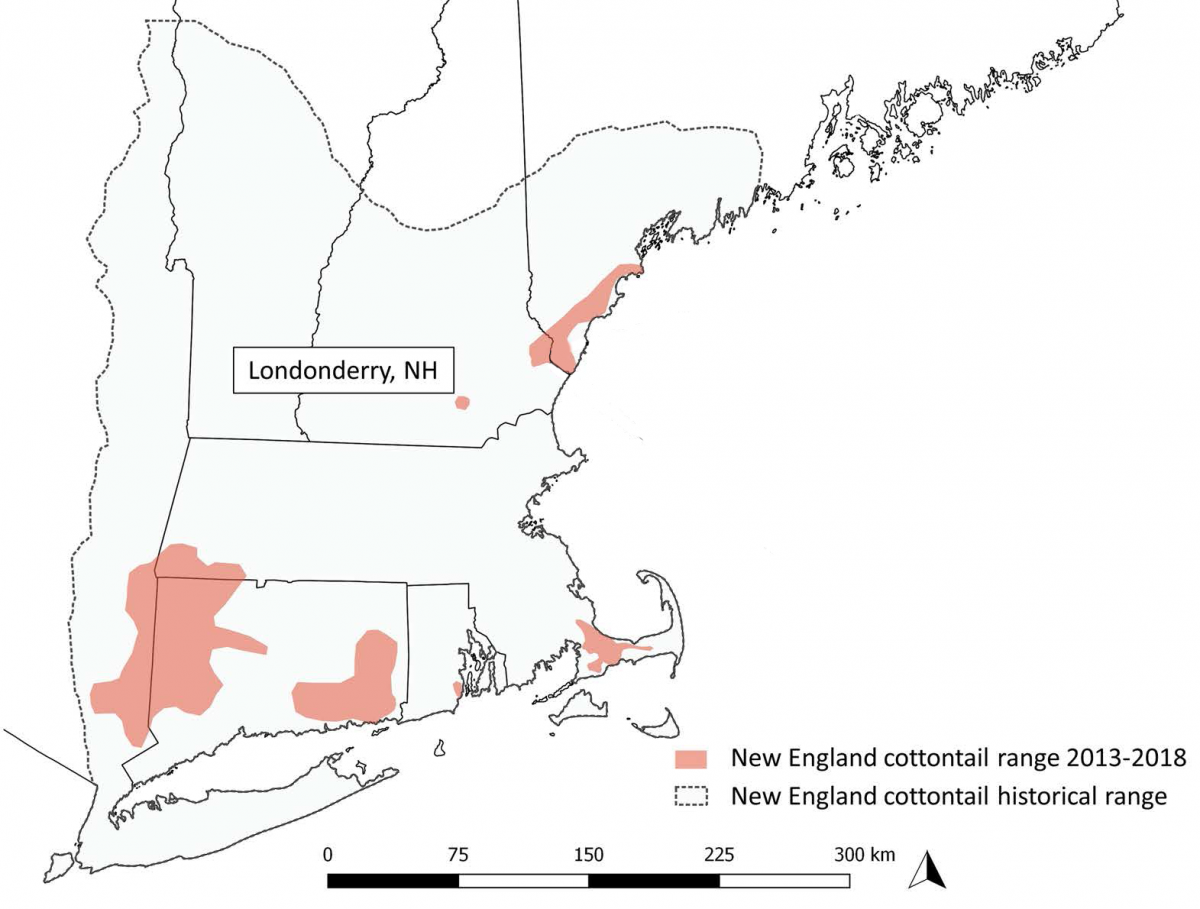
Since 2011, over 13,000 acres of shrubland habitat have been restored or maintained for the New England cottontails, and biologists from the New England Cottontail Technical Committee, the U.S. Fish and Wildlife Service, the USDA Natural Resources Conservation Service, and New Hampshire Fish and Game aim to restore another 30,000 acres of New England cottontail habitat by 2030.
“We’re putting all this effort into creating habitat, so it’s nice to know that even if we create these habitats and the New England cottontail doesn’t end up occupying some of it, that a suite of other animals will use it.”
“We’re putting all this effort into creating habitat, so it’s nice to know that even if we create these habitats and the New England cottontail doesn’t end up occupying some of it, that a suite of other animals will use it,” says Kovach, who’s been studying New England cottontails since 2001. “And although we only surveyed birds, there are other shrubland-obligate species, like pollinators and reptiles, that could occupy these spaces.”
Through her lab, Kovach uses genetic and genomic tools to monitor New England cottontails and develop population and landscape models for the species. Through genetic testing (of DNA taken from fecal pellets), Kovach can identify individual New England cottontails, track their reproduction, familial relationships and movements, and even determine the outcome of recolonizations of newly created habitats.
This material is based on work supported by the NH Agricultural Experiment Station through joint funding from the USDA National Institute of Food and Agriculture (under Hatch award number 1023445) and the state of New Hampshire.
You can read the published article, Can at-risk species serve as effective conservation surrogates? Case study in northeastern US shrublands, in the in Vol. 13, Issue 5, of Ecosphere.
-
Written By:
Nicholas Gosling '06 | COLSA/NH Agricultural Experiment Station | nicholas.gosling@unh.edu

















































